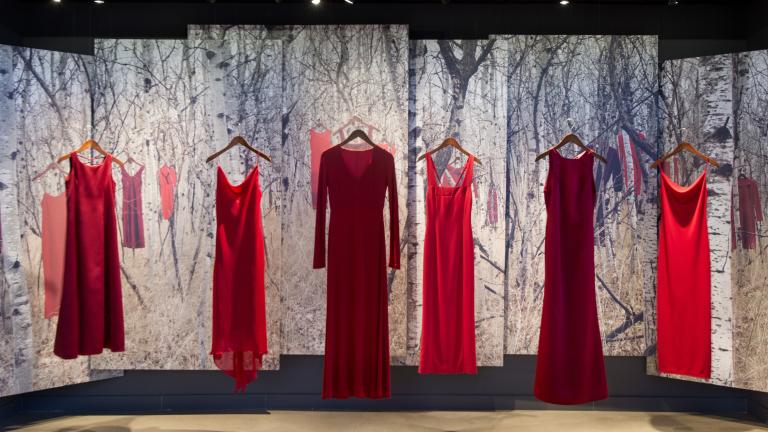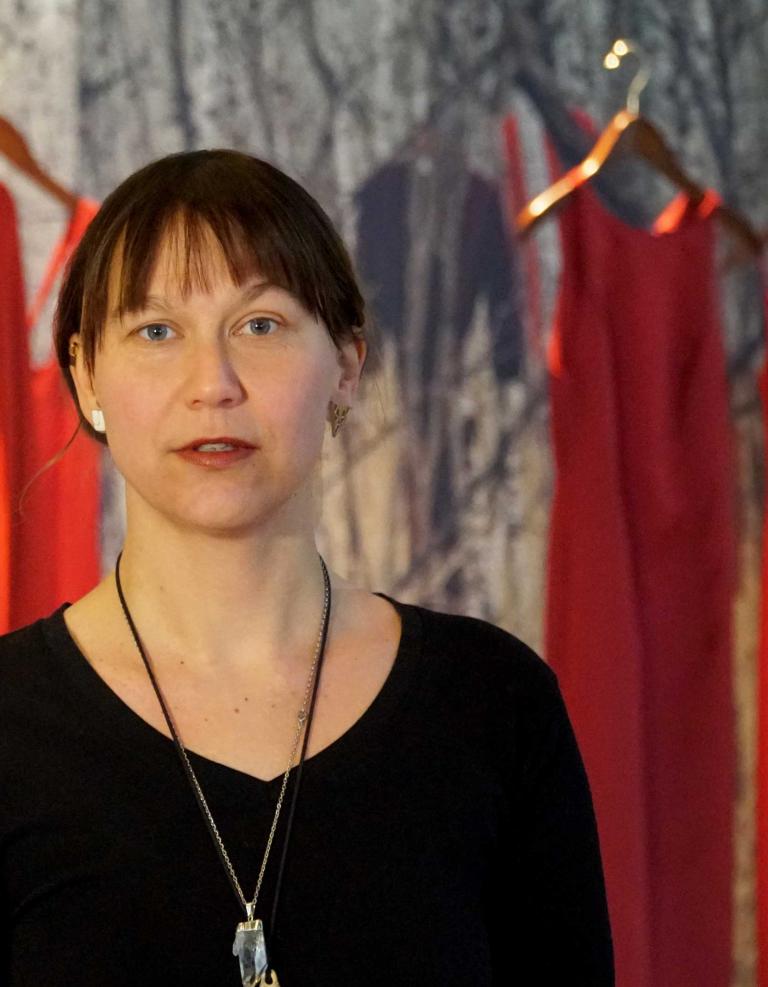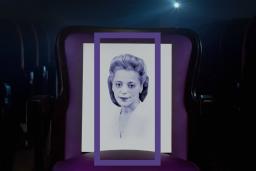Through the courageous efforts of many Canadian women, human rights have advanced significantly, both in our country and beyond our borders. Their bravery and passion to make a difference has helped make Canada what it is today, and their stories highlight the challenges women continue to face in the pursuit for gender equality. We present to you five of these women, whose stories should be known by all Canadians.
Five women all Canadians should know
By Matthew McRae
Published: March 4, 2019
Tags:

Photo: CMHR, Ian McCausland
Story text

With a determination to spread awareness and build support for the issue of missing and murdered Indigenous women in Canada, Jaime Black created The REDress Project. Hundreds of red dresses were collected through community donations and installed in public spaces across Canada as a visual reminder of the many women and girls who have died or disappeared. Several of these dresses can be viewed at the Museum, and it is one our most talked‐about exhibits. The REDress Project is sparking countless conversations about missing and murdered Indigenous women and girls. These are conversations that Canadians need to have – and Jaime Black’s artwork is helping move the dialogue forward.
Imagine being imprisoned and tortured for speaking out against your government – at just 16 years old. For Marina Nemat, there was no need to imagine. In 1979, she was arrested by the Iranian government for attending protests and writing articles about the new government’s oppressive policies. She spent more than two years in Evin prison, where she was tortured and very nearly executed. In 1991, Nemat emigrated to Canada and eventually decided to speak out about her experience. She has written two books and now regularly speaks at high schools, universities and conferences around the world about our right – what she sees as our duty, in fact – to speak out against injustice. In 2007, Nemat was awarded the first Human Dignity Prize, given annually by the European Parliament and the cultural association Europa 2004 to celebrate those working toward a world free of intolerance and social injustice.

When people think of segregation – the enforced separation of racial groups – they usually think of the United States and the civil rights movement led by Martin Luther King. But segregation happened in Canada too, and Viola Desmond – a Black Nova Scotian beautician – was one of the first people to challenge it. In 1946, Desmond was already a business leader in her community. That year, she refused to leave a whites‐only section of a movie theatre in New Glasgow, Nova Scotia and was arrested as a result. She appealed the arrest and lost her case, but her courageous stand continues to inspire. Desmond is fast becoming more well‐known by Canadians. In 2010, then‐Lieutenant Governor of Nova Scotia Mayann Francis posthumously pardoned her, removing her conviction from the historical record. In 2018, she became the first Canadian woman to appear on a regular Canadian bank note.

A Francophone Acadian nurse who grew up in the tiny New Brunswick village of Pré‑d’en-Haut, Huberte Gautreau has travelled the world fighting for the rights of women and communities. Gautreau has fought for health and human rights in many countries including the United States, the Democratic Republic of the Congo, Cameroon and Peru. Her efforts have focused on vital issues like sanitation, clean water, education and women’s equality. Here in Canada, Gautreau has also been very active. Among other achievements, she helped establish a shelter for battered women and counselled people about sexual and gender harassment in her home province of New Brunswick. Today, she continues to work for the rights of women and others.

Today, women across Canada have the right to vote in all elections. But that right wasn’t just given to women – it had to be won. Nellie McClung was instrumental in making Manitoba the first Canadian province to give some women the vote in 1916 – over a hundred years ago. But that was only the tip of the iceberg. McClung never stopped advocating for the rights of Canadians and worked all her life as an activist, author and politician. McClung was one of the “Famous Five” – a group of women who convinced the courts to finally recognize women as persons under the law in 1929.
Nellie McClung also took positions that violated people’s rights. She promoted the pseudoscience of eugenics, which called for racist and ableist control over sexual reproduction. McClung was an influential supporter of Alberta’s Sexual Sterilization Act, which led to the involuntary sterilization of thousands of people considered “mentally deficient” until the law was repealed in 1972.
All Canadians should know the names of these five women. If we work their achievements into our conversations with friends and family, we can ensure that their stories will not be forgotten and will inspire others to take action in the quest for gender equality. There are a multitude of other amazing women in Canada and from around the world who are working passionately for human rights. Which ones inspire you?
Ask yourself:
Which woman would I add to a list of human rights defenders?
Which woman inspires me to take a stand for equality? Why?
What are some of the challenges women still face today?
Dive deeper
Viola Desmond: One woman’s resistance
Viola Desmond helped inspire Canada’s civil rights movement by refusing to give up her seat in a movie theatre. Now, she is on the $10 bill.

Suggested citation
Suggested citation : Matthew McRae. “Five women all Canadians should know.” Canadian Museum for Human Rights. Published March 4, 2019. https://humanrights.ca/story/five-women-all-canadians-should-know